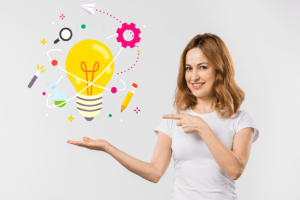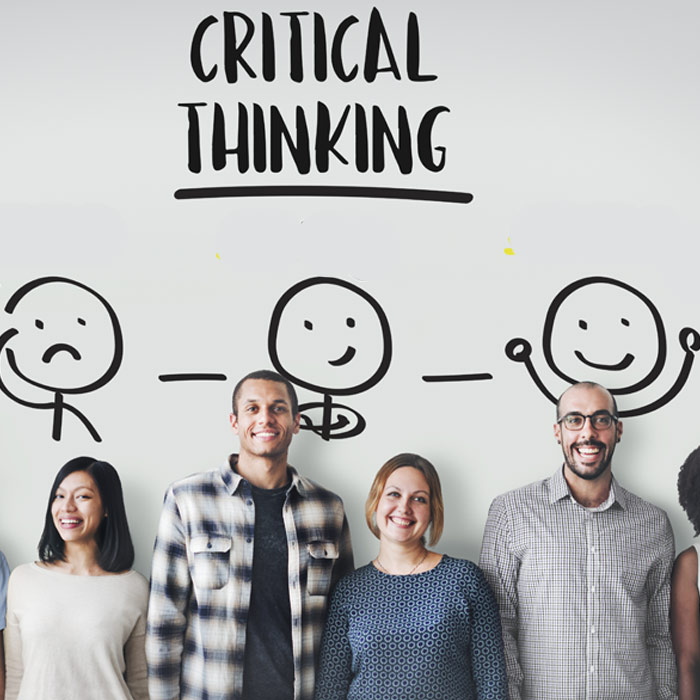 You’ll agree with me that critical thinking is the ability to think clearly and rationally, understanding the logical connection between ideas and being an active learner rather than a passive recipient of information. Indeed, critical thinking is all those things. But what does this look like in the time of COVID-19? How can we really harness this skill to help ourselves and young people in our lives navigate well through crisis and extreme change?
You’ll agree with me that critical thinking is the ability to think clearly and rationally, understanding the logical connection between ideas and being an active learner rather than a passive recipient of information. Indeed, critical thinking is all those things. But what does this look like in the time of COVID-19? How can we really harness this skill to help ourselves and young people in our lives navigate well through crisis and extreme change?
Continuing this brand new series “7 Skills for Right Now”, designed to equip young people with guidance and support to enable them to thrive amidst uncertainty and change. These skills make a huge different in changing perceptions, raising awareness and strengthening confidence.
“Young people willing to push super hard to make something happen are among the most powerful forces in the world.” – Sam Altman
What are the 7 Skills? Grounded in research and in experiential learning workshops run with lawyers, medical practitioners and university students world-wide, we each have unlimited capacity to develop adaptability, critical thinking, empathy, integrity, optimism, proactivity and resilience. When everything around you is deeply uncertain, when you feel anxious, when you’re surrounded by rapid change, the best thing you can do is dig deep and harness these skills. They will enable all of us, to better manage this new environment and our constantly changing personal and professional landscape.
This week: CRITICAL THINKING
 Thinking critically supports our wellbeing, our decision-making amidst ambiguous and constantly changing information and our understanding of complex situations. Yet tapping into this skill can be tremendously challenging in times of crisis.
Thinking critically supports our wellbeing, our decision-making amidst ambiguous and constantly changing information and our understanding of complex situations. Yet tapping into this skill can be tremendously challenging in times of crisis.
I would say that most of us are living with chronic stress related to the pandemic, even if we did not suffer with any anxiety or stress issues before. That means that our brains will naturally want to go to the “fight or flight” response.
When we worry, we deplete our attentional resources, making it harder to concentrate and fully observe our environment. At the same time, we may be more distractible, jumping from one thing to the next, unknowingly searching for signs of threat. Some incoming information will be missed, creating little holes in our everyday memory. We may make errors in decision-making or become stuck in old thought patterns. In short, many of us are struggling with a distracted mind-set that naturally impedes our ability to think critically and focus on what matters most. Our students will be exactly the same.
“It is the mark of an educated mind to be able to entertain a thought without accepting it.“—Aristotle
Why are humans so slow to react to looming crises, like a forewarned pandemic or a warming planet? It’s because we’re reluctant to rethink, say organizational psychologist Adam Grant.
Thinking critically in times of high uncertainty and change means the following:
Being able to handle huge amounts of data
This also means limiting data and being forensic and discerning about sources of data and information. Using news, statistics and all the dizzying sources of information connected with the pandemic is a great place to start and can be part of a tutorial, study group or assignment.
Discerning between fact, fiction and opinion
Our brains are amazing but when we have so much information at our fingertips, we become less able to do this. When we are anxious, we will gravitate towards anything that helps to confirm what we are worrying about – hence brain fog.
Taking TIME to absorb information
This is key and means having more space and time in our day and not flitting around from social media to news to email to discussions and debates. Our brains need time to process change but because we dislike change so much, we try to distract ourselves.
Being super aware of our news sources
And also being more aware of how often we are absorbing news in the background. Once a day is sufficient but when there is massive uncertainty and constant change, we are drawn towards the negative as a protective mechanism.
Understanding our own natural barriers to thinking critically
There are many! From confirmation bias to trusting hearsay, our use of language to describe events and simply believing things without evidence. The first step is to become more aware of our brain’s natural barriers and develop strategies for overcoming these. A great student discussion and task!
Asking A LOT more questions!
Getting into the regular habit of asking just one more question reveals so much more yet we don’t do it. We don’t do it because we are rushing, because we react too fast and don’t make space. That makes ripe ground for our natural barriers to rear their little heads!
Not being swayed by every new tidbit of info
Oh how easy this is to do! Remember, we are highly distractible right now because we are unknowingly searching for signs of threat – there is no shortage of info and social media is the worst for this. Use mindfulness and boundaries to help with this.
Taking time to truly reflect
Because we need to process change – so schedule thinking time into your week whether that’s achieved by making time for walking (how about socially distanced walking tutorials, if feasible?). If you are walking by yourself it’s quiet time, space to think and come up with new ideas. It also gives you a change to absorb things and for your brain to be resourceful.
Not wasting time on pointless arguments
Using critical thinking for debating is one thing but getting into pointless arguments over current government guidelines or whether someone agrees with mask wearing or not just drains energy. Your brain will get depleted fast if you do this. Choose not to.
Engaging in good debate
On the other hand, debate is GREAT and what better environment to practice this skill than at university! Encourage students to debate different topics and ideas, including scenario planning, engaging in fluid thinking and innovation. This kind of debate can happen both on and off-line.
Reading from multiple sources
Encourage this as much as you can! I force myself to read the New Yorker magazine every week. Mainly because there are insanely long articles in there, superbly written, on subjects I know nothing about. It stretches my brain and challenges my attentional filters.
Able to manage distraction
Distraction comes served up to us in two ways: INTERNAL – worry about the future, mind wandering, ruminating about the fast. We are rarely in the present so mindfulness techniques are a fantastic way to help with internal distraction. EXTERNAL – all those notifications, interruptions, smart phone technologies competing for our attention. We must create boundaries, manage notifications and have time away from technology.
The pandemic is pushing governments, businesses and definitely educational institutions to their limits. As individuals we are dealing with so much but let’s also remember that times of crisis often spur incredible innovation and creativity too. This too is part of thinking critically and right now may be just the time to do that.
